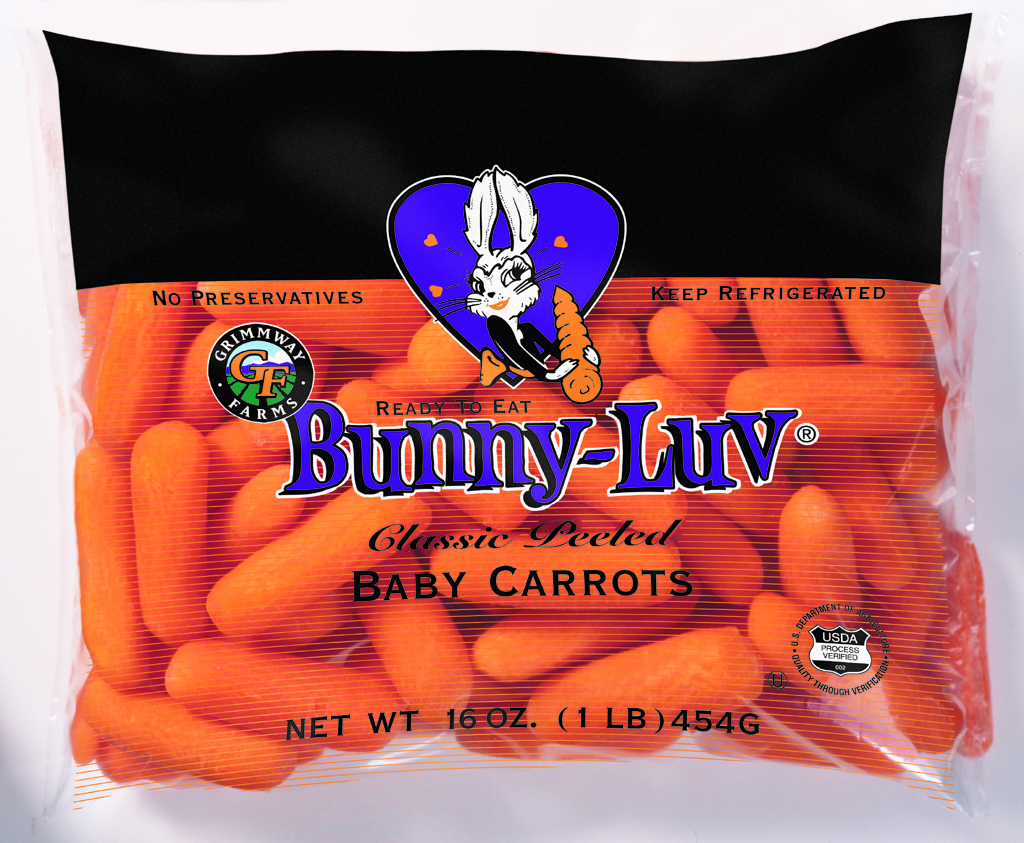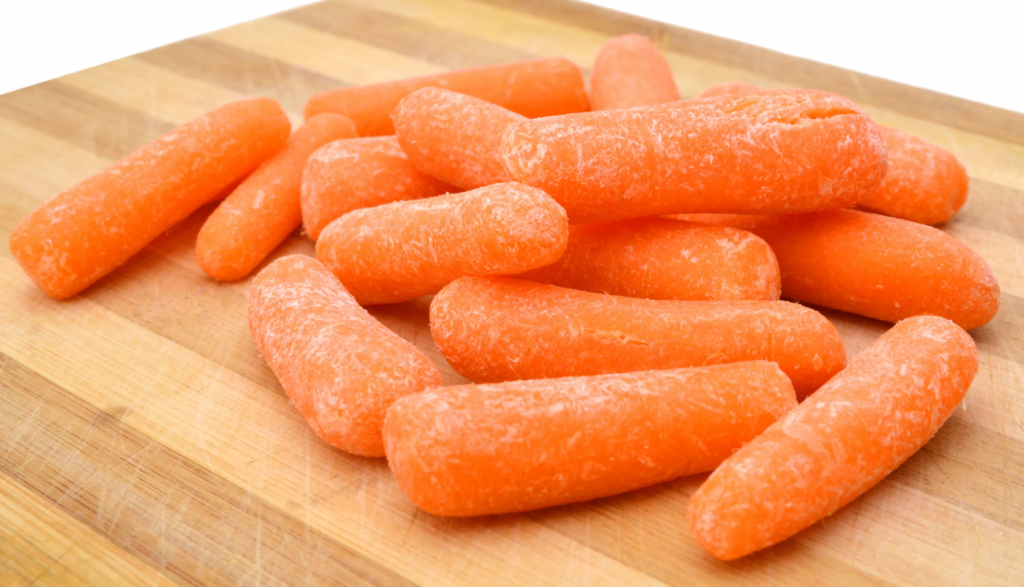Why Are My Baby Carrots Always Wet?

Here’s a little science experiment you can do at home — it’s safe, easy, and best of all, edible. First, go buy a bag of baby carrots, like the one seen above. Next, check the expiration date. Then, take a paper towel and place the bag of baby carrots in the fridge, resting on the paper towel. Come back in a day or two, maybe three. Chances are that paper towel is going to be pretty wet but, when you open the bag of carrots, they’re also going to be wet and slimy. It’s a bit gross.
But wait, the science experiment isn’t over yet — and the carrots? They’re still edible. Now, throw away the paper towel and open the bag of carrots. Grab a new paper towel to blot the carrots dry and place them on a plate on the counter. Come back in a few hours. The carrots will probably be dry and probably covered in a white, chalky-looking substance as seen below.

Again, it’s a bit gross. First, the baby carrots are slimy and are leaking water all over the fridge. But if you dry them, they look like they have a carrot version of leprosy. It’s kind of amazing anyone eats these things. Why are the carrots doing such weird things?
The good news is that it’s all safe. The better news is that it’s all reversible. Here’s what’s going on — and how to save your baby carrots.
First, as previously discussed on these pages, baby carrots aren’t a specific type of carrot (although increasingly, a specific type of carrot is used to make baby carrots. Rather, as I wrote in 2011, “baby carrots are just regular carrots, whittled down into tiny, two-bite sizes.” Basically, weird-looking regular-sized carrots don’t sell well, so a farmer had the idea to turn these ugly carrots into cute versions. (If you want to read the longer history of baby carrots, hit that link.)
It’s a good idea — it limits food waste and also gives us a snack-size carrot. But the making of baby carrots comes at a cost: the carrots lose their skins in the babyfication process. In the best of conditions, carrots tend to dehydrate faster than many other vegetables, with their thin skins being one of their only ways to retain moisture. As Mental Floss notes, “to make baby carrots, the outer layer has to be shaved away, so there’s nothing keeping the water locked inside.” And to make matters worse, per Mel Magazine, “after a regular carrot is chopped to baby length, the pieces are sent into a polishing drum that, combined with water, shapes the carrots into smooth little cylinders.” And to keep the carrots from drying out in the bag, baby carrot packagers add filtered water into the bags, giving the babies a little bath to keep them from drying out before they reach your kitchen.
So if your baby carrots are a wet, slimy mess, don’t worry about it — just blot them dry. They’re still good.
But when they dry out, you have a new problem, right? Nope. The white stuff on the carrots isn’t anything toxic or dangerous. Called “carrot blush,” it’s “the result of two separate factors: moisture loss and damage to the carrot cells,” according to McGill University’s Office for Science and Society (which uses the wonderful tagline “Separating Sense from Nonsense”). Per McGill, “when moisture is lost from the surface of the carrot, the surface then becomes rough allowing light to be scattered. This, in turn, gives off a white appearance.” They’re safe to eat as-is, but if you can’t get past the visuals, that flaw is easily solved. As Tasting Table suggests, just “soak[] the baby carrots in cold water to hydrate them again.”
Bonus fact: As Bugs Bunny will attest, rabbits really do love carrots. But while carrots are a more healthful food choice for us humans, that’s not the case for Bugs and other bunnies. As How Stuff Works summarizes, “a balanced rabbit diet consists of unlimited quantities of hay or grass, plus smaller amounts of veggies and leafy greens — which could include the tops of carrots but not the carrots themselves.” Rather, carrots and other root vegetables “should be considered a treat for rabbits” and “allowing a rabbit to have too many carrots could result in obesity, as carrots are largely empty calories for these creatures.”
From the Archives: Baby Carrots: The history of baby carrots, shared above. If you want another carrot story, the first-ever Now I Know was about carrots.
